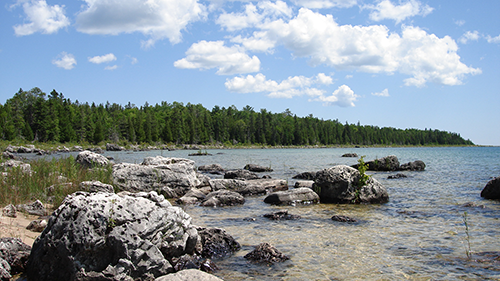Jan 30 2015 USDA awards funds to cross-sector partnerships across the U.S.
 The U.S. Department of Agriculture (USDA) is the latest federal agency to roll-out a robust network of programs that leverage cross-sector collaborations and implement new strategies that support locally driven conservation efforts. Secretary of Agriculture Tom Vilsack announced 115 awards this week for projects across all 50 states that aim to improve water quality and support conservation plans through the Regional Conservation Partnership Program (RCPP).
The U.S. Department of Agriculture (USDA) is the latest federal agency to roll-out a robust network of programs that leverage cross-sector collaborations and implement new strategies that support locally driven conservation efforts. Secretary of Agriculture Tom Vilsack announced 115 awards this week for projects across all 50 states that aim to improve water quality and support conservation plans through the Regional Conservation Partnership Program (RCPP).
RCPP encourages partners to join in efforts with producers to increase the restoration and sustainable use of soil, water, wildlife, and related natural resources on regional or watershed scales. Through RCPP, Natural Resources Conservation Services (NRCS) and its partners help farmers and distributors install and maintain conservation activities in selected project areas. Partners leverage RCPP funding in project areas and report on the benefits achieved. As Karen Woodrich, USDA’s NRCS Kentucky State Conservationist put it, “RCPP puts our partners in the driver’s seat. Projects are led locally, and demonstrate the value of strong public-private partnerships that deliver solutions to tough natural resource challenges.”
One such project is the Saginaw Bay Watershed Conservation Partnership. Co-led by the Nature Conservancy and the Michigan Agri-Business Association (MABA), it brings together a variety of partners including regional watershed groups, agronomy retailers, commodity groups, conservation groups, higher education institutions, foundations, and state and federal agencies. The partnership will implement conservation practices, at scale, that are proven to reduce nutrient and sediment laden runoff and enhance fish and wildlife habitat.
Saginaw Bay hosts the largest coastal wetland in Lake Huron and faces numerous water quality challenges, including loss of habitat, excessive nutrients and sediment, and algal blooms. It is America’s largest contiguous freshwater coastal wetland system and also Michigan’s largest watershed, including all or part of 22 counties. The watershed also features more than 175 inland lakes, about 7,000 miles of rivers and streams, and is home to 1.4 million people.
This project will set ecologically relevant implementation goals, track progress using new online tools, and harness the influence of agribusiness as a complementary delivery mechanism in order to reach goals of treating 55,000 acres with conservation practices and restoring 400 acres of wetlands by 2019. Partners believe that setting outcome-based, ecologically-significant implementation goals; tracking project implementation via the Great Lakes Watershed Management System; and partnering with agribusinesses and their certified crop advisers to deliver conservation directly to agricultural landowners is the most effective way to achieve a solution.
“There’s no quick fix on water quality, but this new public-private partnership under RCPP in the Saginaw Bay Watershed represents an important first step,” says Jim Byrum, president of MABA. “Protecting and improving water quality in the Saginaw Bay will take time, effort, and creativity. We look forward to working with The Nature Conservancy, Michigan State University, and all the partners involved in this innovative effort.”
